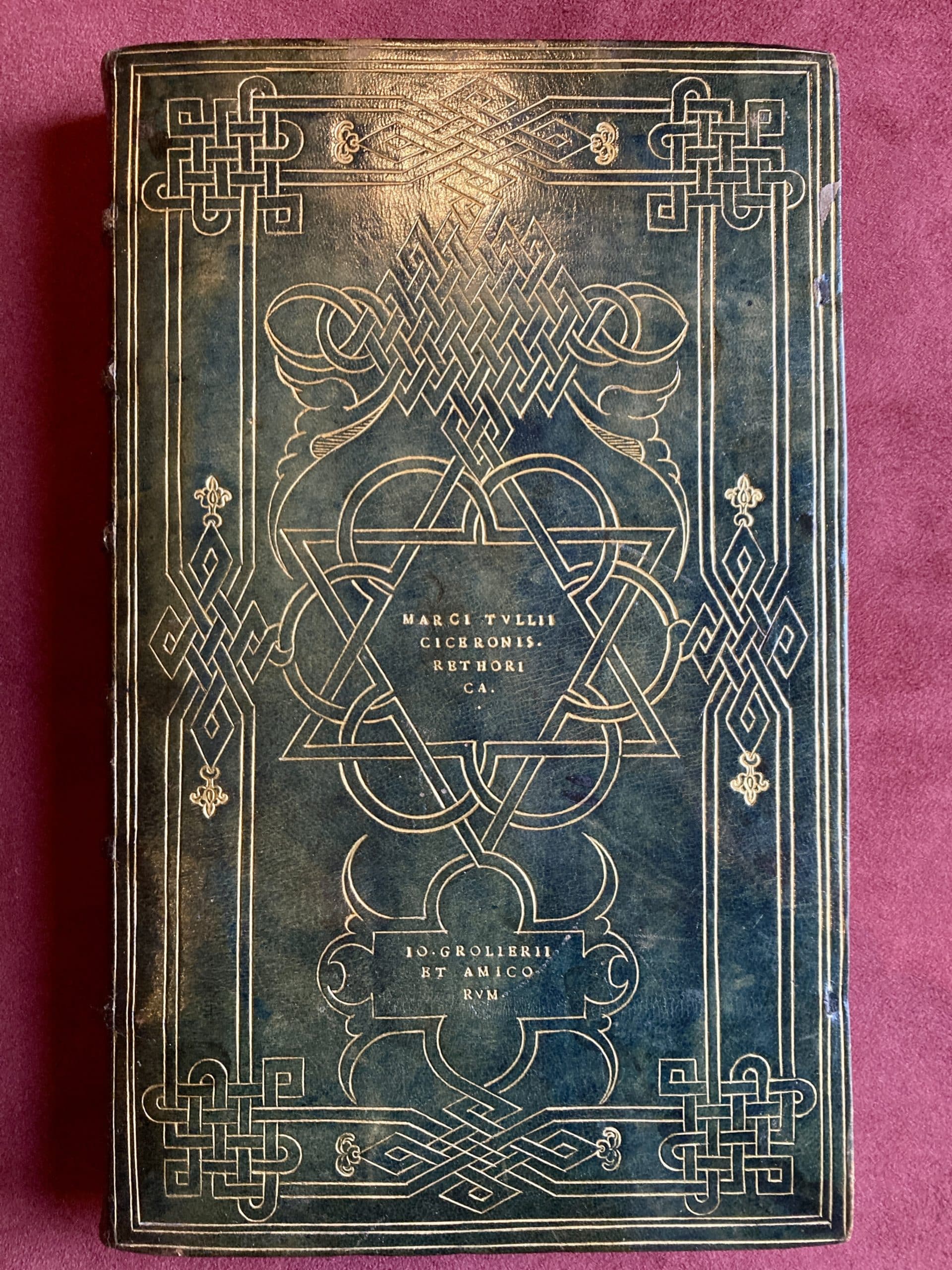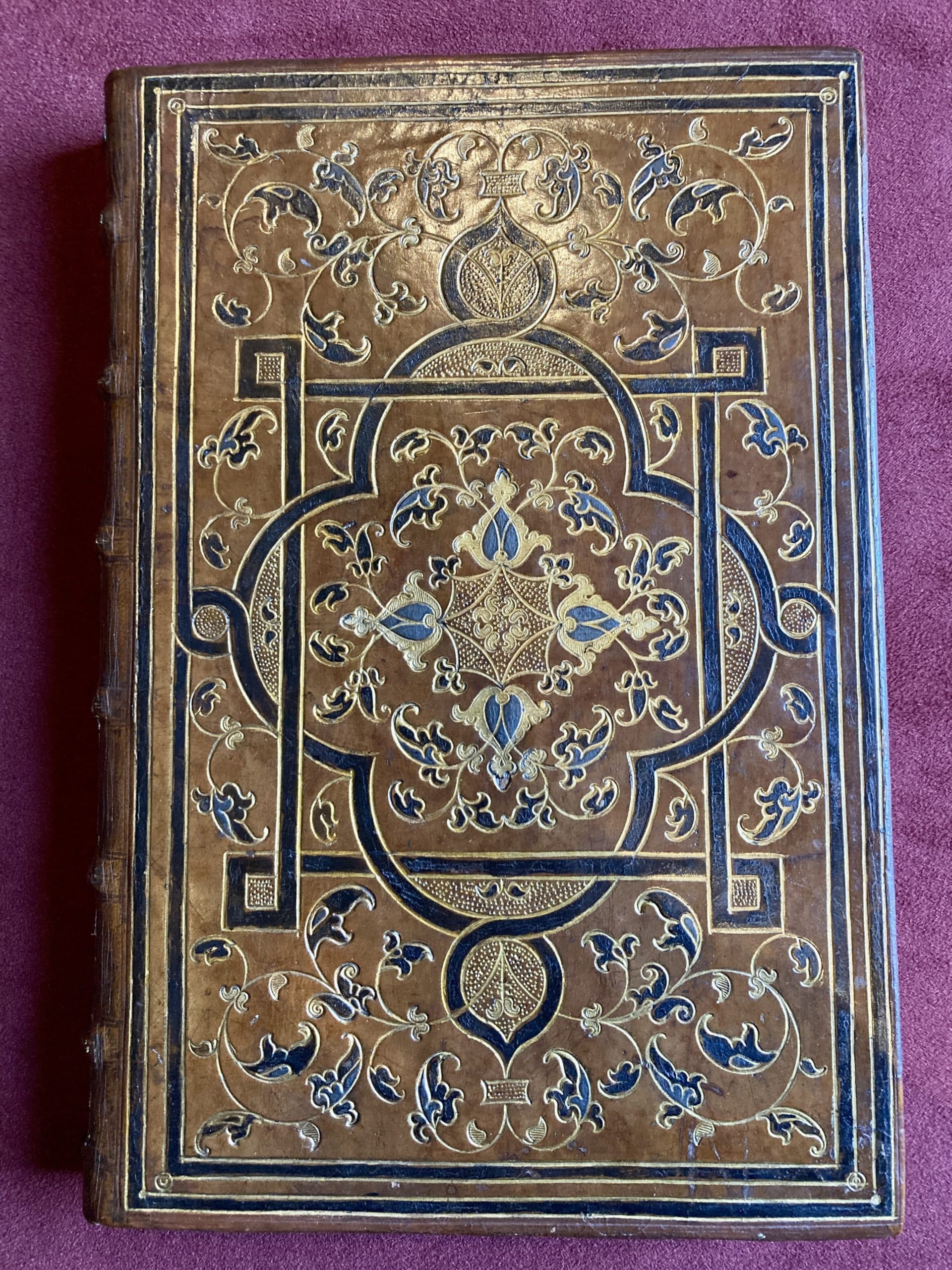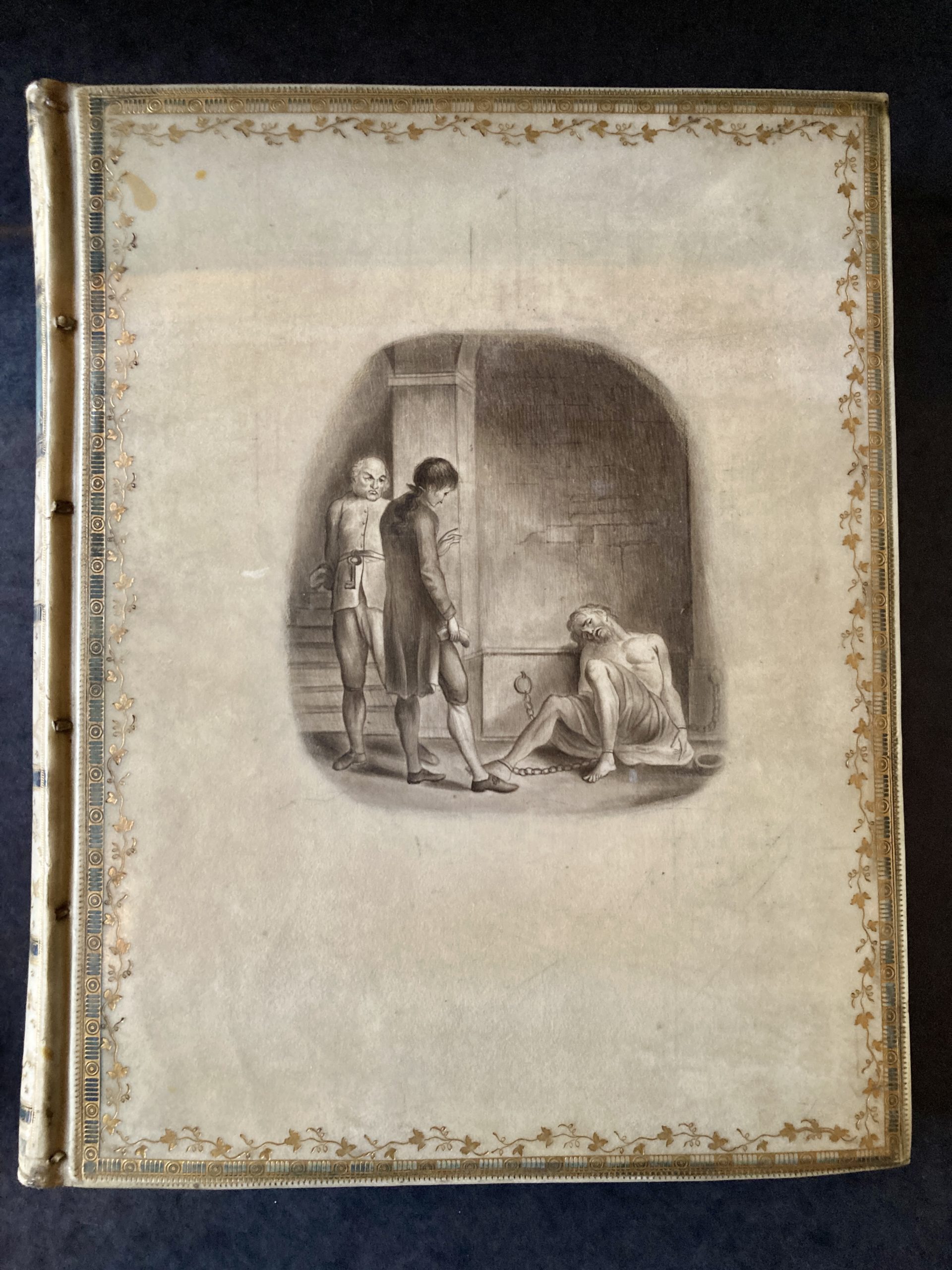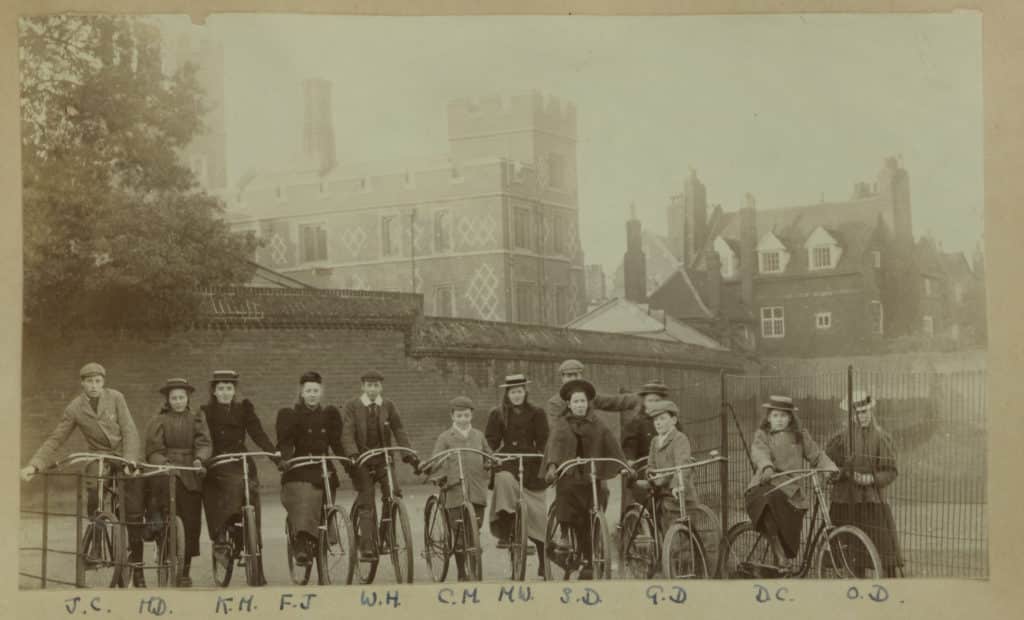It is a common experience for librarians to deal with requests like ‘I am looking for a book; I can’t remember the title, but it’s the one with the red cover!’. Indeed, modern publishers use beautiful or memorable covers to make a book attractive to potential readers, but this is a pattern that has much earlier origins, dating back to at least the 7th century. The original function of bookbindings was to protect the text. However, they soon became artistic objects in their own right, which distinguished each volume as unique. College Library has many such examples across the early modern period: these are three of the finest.

ECL Sa1.2.02
Marcus Tullius Cicero, Works. Venice, 1534
This volume is from a set of five containing the works of Cicero commissioned by the famous book collector Jean Grolier (c.1489/90-1565). The book was printed in Venice in 1534, and bound in Paris some ten years later. Claude de Picques, the personal bookbinder of Queen Catherine de Medici, was responsible for creating elaborate gilt tooling on both covers: a complex geometrical design formed by two parallel gilt lines interlaced to form a central hexagram with strapwork above and a cartouche below. It is work of the highest skill and quality. Many of Grolier’s bindings are identified by the lettering Grolier et amicorum (Latin for ‘and friends’), which you can read in the cartouche, suggesting that he shared his books with his immediate circle of bibliophiles.

ECL Sa1.2.08
Henricus Agrippa, De Occulta Philosophia. Cologne, 1533
This wonderfully fresh, delicate binding was made in Paris about 1550. While English bindings of the time were stylistically restrained, the work of French binders was famous for its elaborate patterns. Here, the strapwork design is painted in black and the leather enclosed by the leaf tools is painted on black and silver-grey. The book belonged to Thomas Wotton (1521-1587, the father of Sir Henry Wotton, Provost of Eton), who was a distinguished book collector known as the English Grolier.

ECL Sa1.2.15
John Howard, The State of Prisons. Warrington, 1784
John Howard’s The State of Prisons is a landmark in social history. But this copy of the third edition is more important for its binding, the work of the Edwards family of Halifax. The picture of Howard, accompanied by a warder visiting a chained prisoner, is painted underneath a sheet of transparent vellum, a technique invented by James Edwards in the 1780s. This technique allowed the use of illustrations on the book’s covers, as it protected them from abrasion on the shelves. Thanks to it, we can still admire the binding as it would have looked in the eighteenth century.
Charlie Barranu, Library Curator, and Michael Meredith, Librarian Emeritus



